The following "Best Of" list is part of a series among members of the Gameological community. For my piece, I chose to write about games I played for the first time in 2022, rather than focusing on games that were released in 2022. I chose to discuss fifteen categories out of the available nineteen. Keep your eyes peeled for other Gameological Awards posts!
Introduction
Twenty twenty-two. What a year. A big year. A strange year. An exciting year. A year full of ups, downs, and everything in between. Without the ebbs and flows of this most usual three hundred and sixty-five days, this list looks much different. There are games I played that I otherwise wouldn’t have touched, things I valued that I otherwise wouldn’t have considered, and experiences that I never thought I would have sought out.
Twenty twenty-two.
It started out like any other year. I spent my January playing a meaty JRPG, I marked the exciting new releases on my calendar, and I filled in the gaps with several games that had been weighing down my backlog. For all intents and purposes, the year was just like any other. Until July.
You see, I’d been working at the same company since I graduated college. For those keeping score, that’s eight years. Yes, I’d been promoted a few times and, yes, the pandemic reshaped how I approached my work, but the consistency of the last eight years has meant that I’ve had the mental bandwidth to stuff my spare time with the most ambitious of video games. However, in July I began interviewing with a new company and, by August, I was working there. A new job, a new office, and new coworkers. As such, I couldn’t commit my brain to playing back-to-back Kojima games or a laundry list of Final Fantasies. I had to keep things short and keep things light.
My gaming diet now consisted of largely retro games; short experiences that I could knock out in an afternoon and move on. It sounds crass, I know, to describe works of art as disposable little trinkets to cast aside after a few hours, but rest assured, most of these titles were ones I had always told myself I wanted to try out. In a way, this was the ultimate Retro Backlog Expunger. I had said two years ago that our time in lockdown was perfect for tackling those pesky “eventually” games, but I can certainly say the same for Twenty Twenty-Two.
The nominees: Bug Fables: The Everlasting Sapling, Outer Wilds: Echoes of the Eye, Dark Souls, Halo 4, Castlevania, Elden Ring, Super Mario Odyssey, Donut County, Spider-Man: Miles Morales, Bayonetta 2, Axiom Verge, Spiritfarer, Sonic the Hedgehog, Super Mario 3D World, Donkey Kong Country, Vectorman, Fire Emblem Awakening, Star Fox, Streets of Rage, Kirby’s Adventure, Ninja Gaiden, Gradius, Castlevania II: Simon’s Quest, Stray, and Firewatch.
The "(In)famous" Award
This award goes to the game whose reputation precedes it.
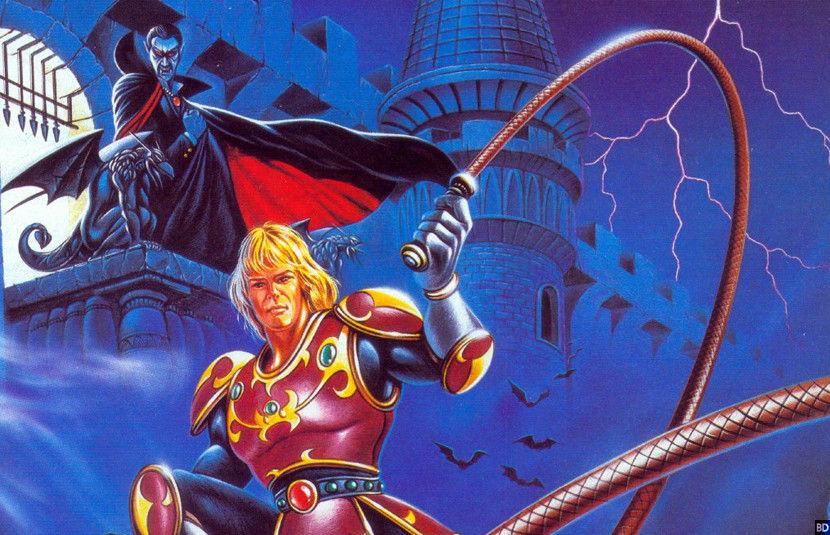
Prior to this year, I actually had little knowledge of the Castlevania series. I was aware that it was about hunting vampires and knew that it lent its name to a portmanteau describing one of my favorite genres of gaming, but other than that, I hadn’t really played any of the games. This was partially because I didn’t have an easy way to access them, and partially because my stupid broken idiot brain requires me to play a whole series, in order, from the start.
Thankfully, the Castlevania Anniversary Collection made it easy to do both. I now had the entire early catalog of games at my disposal, along with a few quality of life features that made binging the games feasible. I played through the first entry and, yeah, it was pretty fun. But I put off playing Castlevania II: Simon’s Quest because I had heard nothing but negative things about it. Friends, forums, and everyone in between all said that this entry wasn’t worth checking out. But I sucked it up and tried anyway.
To all the haters: what are you talking about?
It’s true, the game suffers from a lot of NES-era tomfoolery. Enemies spawn with reckless abandon, jumping is an imprecise art, and there are more needles in haystacks than there are places to heal. The eight-bit era was famous for its cruel difficulty, and Castlevania II is not completely innocent on this front.
But, goddamn, this game swings for the fences regardless. Though its predecessor was a simple action platformer set in a spooky castle, Castlevania II explores non-linear gameplay, a proto-open world design, a day/night cycle, and role-playing elements. There are puzzles a plenty, an abundance of riddles, and a series of different endings that reward players who successfully reverse the curse of Count Dracula.
It’s important to remember that the Eighties Gaming Industry was the wild west. Companies were churning out games left and right, license agreements were haphazardly signed, and nary a thought was given to the long-term legacy of these franchises-to-be.
That’s what makes Simon’s Quest so incredibly admirable. It would have been so easy to just “make another” Castlevania game. Just shuffle around some tiles, recycle some enemies, and you’ve got yourself a sequel! Instead, director Hitoshi Akamatsu built something new from the ground up, laying the foundation for future installments.
Yes, Symphony of the Night is everyone’s favorite Castlevania game, but Simon’s Quest is absolutely worth a playthrough.
The "Playing Vicariously" Award
This award goes to the game I enjoyed watching someone else play, whether virtually or in person.
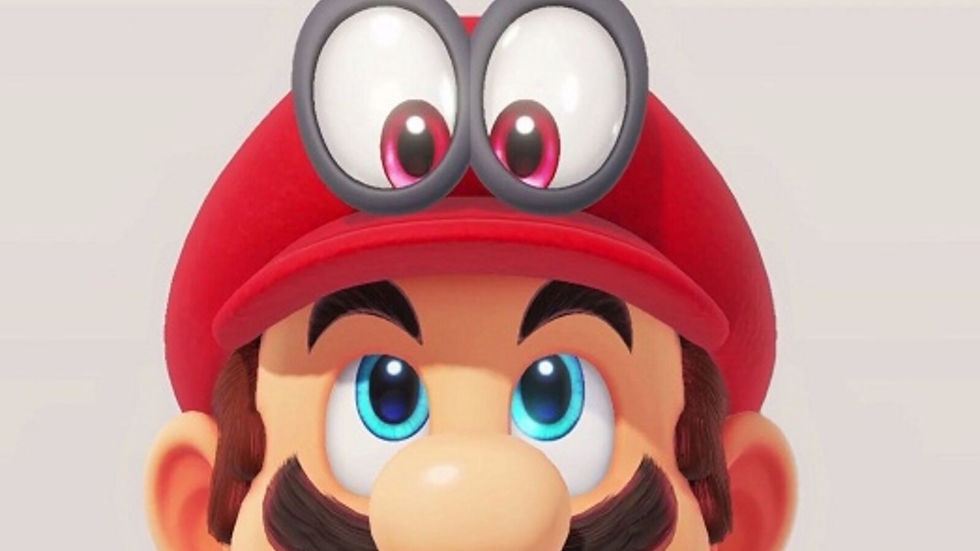
For better or worse, accidental or intentional, I am a Nintendo Guy. I’ve been playing their games for so long that I can barely remember a point in my life before Mario, Link, or Samus. I’ve played some titles so many times I don’t even have to think about it any more. I know where to find all the Red Coins, how to get that pesky Missile Expansion, and how to navigate the Lost Woods. To me, it’s like breathing.
So when my fiancé told me she wanted to play Super Mario Odyssey, I was elated. “Yes,” I thought, in my best supervillain voice. “Now you will see why I love these games so!” We booted up the Switch and she got to playing.
I do my best not to back-seat game. I’ll give some vague hints if asked, but I never want to spoil the story or ruin the puzzles. Watching Melissa play Odyssey, however, was a challenge because…she was doing it all wrong. With every acrobatic challenge she approached, she would pull out the oddest, most baffling combinations of moves. It took every ounce of self-control to not shout, “Do a long jump!”
You see, I love the long jump. It’s a top-three Mario Move for me, up there with the triple jump and backflip. The long jump is an elegant maneuver; the perfect balance between speed and precision. Performing a long jump is the ultimate demonstration of environmental awareness and situational presence of mind. It’s an integral part of every Super Mario game and it’s virtually impossible to beat the game without using it.
Or so I thought.
Because Melissa beat the whole game without ever performing a long jump. Or a backflip. Or half of the other moves I considered to be “necessary.” I had long touted the versatility of Super Mario games to friends and family, but it wasn’t until I saw her playthrough that I realized just how versatile they really are. Because I had sworn my loyalty to the Long Jump, I had never realized how a Ground Pound Jump, followed by a Cap Dive, could not just achieve the same result, but actually be superior.
Watching her play Super Mario Odyssey was like watching someone play a completely different game. Solutions I had never considered, combos I had never performed, secrets I had never found…it was all laid bare before my eyes. I was an old man, stuck in the past, and here was Melissa challenging my understanding of what it means to play a Super Mario game. It was incredible.
And just for the record, yes, I gave this award to Odyssey last year too, but that’s different! Last time it won because I had watched a bunch of speed runs. This is totally different!
The "Oh Yeah, I Did Play That..." Award
This award goes to the game that I just plain forgot I played.

Who doesn’t love a good puzzle game? Whether you are shooting portals, flipping switches, or being Baba, figuring out the tricky little mechanisms laid out for you by clever developers can be an exciting and invigorating experience. You feel smart and accomplished, even though the breadcrumbs you followed were laid out with deliberation.
But there is nothing worse than an unsatisfying puzzle. When you play a shooter that’s too easy, you at least get the joy of feeling like a juggernaut. When you play a platformer you’ve mastered, you can leave your friends in awe. But you don’t feel like a genius when you glide through an easy puzzle. You just feel bored.
Donut County is almost entirely easy puzzles. They are so easy, in fact, that I would hesitate to even call them puzzles. Out of the twenty or so different “levels” in the game, I only recall two distinct “solutions” to “problems.” That’s it! I vaguely remember using embers to burn some wood? And launching a missile at a raccoon?
The writing is cute, I suppose. Though the dialogue suffers from characters who are overly quippy, it’s largely inoffensive and a handful of jokes even managed to force a bit more air out of my nose than usual. But, at the same time, I couldn’t actually tell you what the story was about.
So, on the one hand, we have a puzzle game with no memorable puzzles. And on the other hand, we have an uncompelling story. It’s no wonder I forgot I even picked this one up.
The "Just Didn’t Click with Me" Award
This award goes to the game that everyone loves. Everyone except me.

Expectations can be a sonuvabitch. People always tell you to set them low, because then you won’t be disappointed when something doesn’t meet them. It’s a fair statement, sure, but it’s easier said than done. It can be even more challenging to do when those expectations are based on consistent past performance. This developer has a history of making great games? Then how could the next one be anything but?
Well, the good news is, Elden Ring is not a failure. In fact, it’s so good that it almost ended up winning the highest honors this year. So how the hell can a game I spent over a hundred and ten hours playing be slotted here? Well, that’s tough to say. It’s taken me months to parse through my feelings and understand the relationship I have with this most ambitious of FromSoft titles.
Elden Ring’s most notable trait is its scope. Gone are the narrow, winding hallways of Dark Souls and Bloodborne…now, players are invited to explore a kingdom that is absolutely mind-bogglingly massive. This open-world design is both a feature and a bug, depending on who you ask. The classic FromSoft dungeon design is certainly present in the game’s many castles and crypts, but the lands between these points are full of identical tombs and repetitive enemies. These recurrent encounters are not a deal breaker, at least not on their own. Some enemies are fun to fight twice, some are remixed, and others can just be ignored. But it does beg the question: If there aren’t enough unique elements to fill the game, then is the game too big?
While we consider that question, we must also consider this: “scope” is not limited to the size of the map. Elden Ring presents its players with the widest array of combat options imaginable for a FromSoft game. From melee to magic, spirit ashes to ashes of war, and skills to affinities, there are so many different things that a player can do. The breadth is overwhelming. Combat, as a result, is an invitation to use these various perks, but the wide array of options end up diminishing the very facet of what makes Dark Souls and its ilk so appealing: simplicity.
I am a man of basic taste. Give me a sword and point me towards a group of skeletons. I’ll make quick work of the lot. Slashing, stabbing, blocking, and rolling…that’s all I need. There is a joy inherent in staring down a massive demon and poking him with a sword that you found laying in a field somewhere. I have conquered this world, I have conquered death, and I did with the simplest of tools.
Elden Ring, however, makes it clear to the player early on just how improbable of a feat that will be this time around. Impossible? No. But unlikely, especially compared to previous games. You are encouraged to use all the tools this world provides. I am told to summon ethereal jellyfish and conjure spikes of ice into existence. I am told to not bother with this boss until much later, and instead I should go explore some caves until I am deemed strong enough.
These are elements of the game that I don’t necessarily care to imbibe. I don’t want to perform magical miracles or summon fantastical assistants. I want to walk up to a monster and hit it with my big dumb axe. I wanted to don the coolest armor I can find and challenge a knight to a swordfight. I wanted to sneak behind a skeleton and stab him in the back. I want to play the game my way.
Unfortunately, those types of encounters were few and far between. Instead, the boss fights in the game almost all boasted long-range magical strikes, spammy area-of-effect attacks, and movement so fast that I had to sprint to keep up. If I wanted to keep the playing field level, I had to adapt to the combative complexities that I wanted to ignore.
So, in a way, I’m jealous of people who love Elden Ring. I watch videos of people performing the most complex actions imaginable. Cast a spell on your sword, stab yourself with it, light the blood on fire, drink a potion, ring a bell, and then, boom, the enemy is killed in one hit. I’m envious of people who scour the menus and read the descriptions and engage so critically with everything the game has to offer.
When I play Dark Souls, I can feel it in my bones. I don’t need to think, I don’t need to analyze, I can just do it. When I arrive in Anor Londo or Yharnam, I am guided by instinct and gumption. Yet, in Elden Ring, my instincts are refuted. When all was said and done, I did not feel challenged, but rather manipulated. I did not conquer this world as I had so many others. For all its grandeur, Elden Ring felt the most like a Game.
The "Waiting for Game-dot" Award
This award goes to the game that I didn't play this year, nor last year, nor the year before that. Maybe next year.
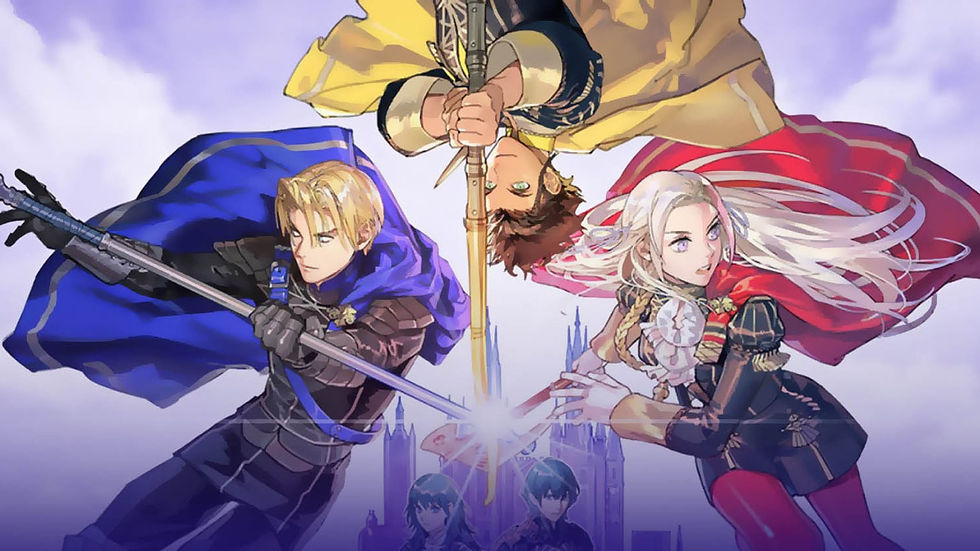
I try to alternate between “time-consuming heavy” games and “light, quick, breezy” experiences. I usually feel very full, like I’ve had a complete meal, after sinking over fifty hours into a game, so the quick turnover of smaller indie titles helps keep things fresh. This year, however, I devoted all of my “big game” attention to titles released by FromSoft and Nintendo. Those are the games that are often ranked as “Bests” of their year, or are recommended to me by friends.
Does this sound familiar? That’s because the same thing happened last year. And the year before that.
My slavish devotion to Fantasies, Marios, and retro staples meant I never got around to playing a game that I’m sure I’d love, Fire Emblem: Three Houses. Nintendo has a way of reinventing genres that I’d otherwise be so-so on. They did it with Splatoon and Mario Kart. But something seems too daunting about learning a game this meaty.
However…there is an update, lest you think this entire entry is copy+pasted from last year’s list. Though I haven’t played this Fire Emblem, I have now played a Fire Emblem.
The "Hindsight is 2022" Award
This award goes to the game that, in time, I've changed opinions on, for better or worse.
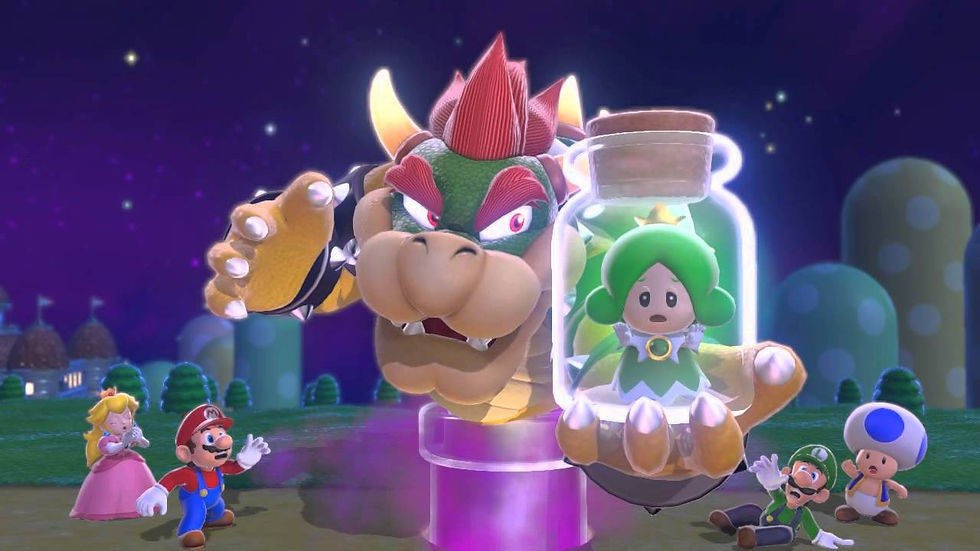
I've been playing a lot of Mario lately. That's not normally something I need to state, as it seems I'm always playing a lot of Mario all the time. But I've been revisiting several games in the franchise and, eventually, a controversial game gets the call.
I didn't like Super Mario 3D World the first time I played it, nor the second, nor the third. The last time I ran through it, I found myself exclaiming "This is why I hate this game" every time something pissed me off. Getting pissed off is a common occurrence when I play this entry, as nearly every design choice made by Nintendo runs counter to what I hold dear. Super Mario 3D World is the Anti-Alex Mario Game.
And yet…
I had a song from the game stuck in my head the other day and, one track led to another, before I found myself listening to the entire album. And as I listened, the unthinkable happened: I wanted to play it some more.
And so I did. I went back and ran through the entire game again, knocking out all the characters I had left to play, until I had finally gotten the five shining stars on my profile. For the uninitiated, that means I had played every level with every character, collected every star, stamp, and gold flag, all without using the Golden Tanooki suit.
It's taken five playthroughs of the game, but I have now, grudgingly, accepted that I like Super Mario 3D World. I don't know why…I still detest all the aspects of the game I detested the first time around. I still find it lacks the immersion of its predecessors and successors. And I still feel it was a step back for the series as a whole. But I have a respect for it all the same, and that infectious Super Mario joy still manages to hack my big dumb brain.
I like Super Mario 3D World a whole lot for someone who doesn't actually like Super Mario 3D World.
The "Best Backlog" Award
This award goes to the game that I finally got around to playing after years of saying I would.
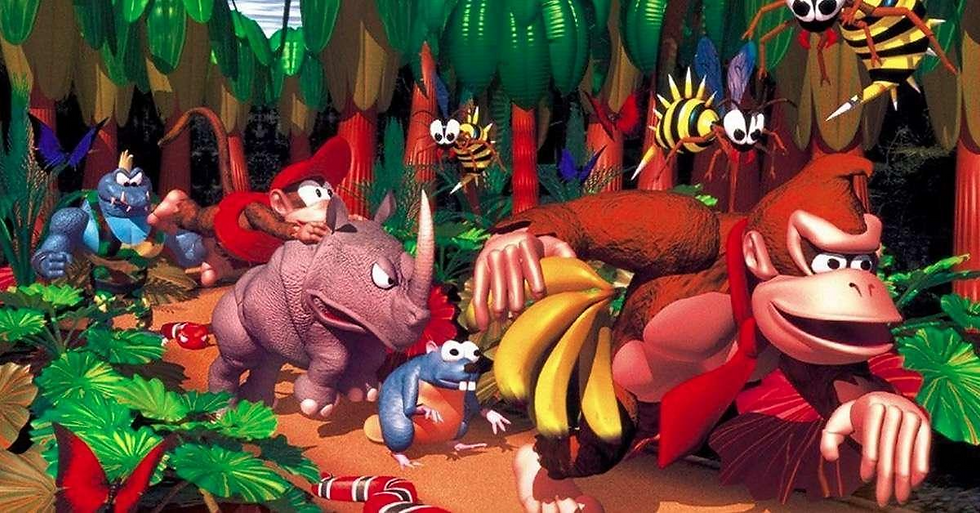
When I think about video games, I often look at three traits when breaking them down: mechanics, aesthetics, and story. The importance of each category varies based on my mood, but by and large, mechanics are the most important attribute when deciding which game I want to play next. Will it be fun? Will the actions feel satisfying to perform? Can I do the thing?
A good story and enticing aesthetics are a plus, but they rarely get in the way of my enjoying a game with otherwise good mechanics. I'll sit through a setting I don't care for or plot I find boring if the game, at a high level, is fun. I say "rarely" because, throughout my life, there has always been one exception: I hate that motherfucker Donkey Kong.
I shouldn't limit this to Donkey Kong, actually. I also hate Diddy Kong and Cranky Kong and all the stupid idiot Kongs. I hate monkeys. I hate gorillas. I hate apes. I hate them all. I've suffered through Donkey Kong's presence in Super Smash Bros. and Mario Kart and Mario Party, but I loathed his stupid ugly face every time.
But, this year, I caved. After decades of procrastination, I finally loaded up the SNES classic Donkey Kong Country. And folks, it's good!
Annoyingly good, actually.
I knew three things about the game going in. 1) It’s a platformer where, 2) You collect bananas and the letters that form “KONG, and 3) there is a mine cart at some point. That’s it. So while the first level left me sufficiently whelmed, every subsequent level impressed me more and more. I was blown away with how much Donkey Kong Country does with so little. For a SNES game, it’s incredible just how many unique moves and mechanics are packed into one tiny cartridge.
Every single level brought something new to the table, from falling platforms to light switch barrels. And, like the best of games, Donkey Kong Country introduces its ideas early on and then, once the player is familiar with them, begins to remix them later on. The game’s many systems compound on one another and create some of the most expressive and enjoyable courses I’ve ever played.
It sucks that it’s taken me so long to play this game. If only its protagonist wasn’t a primate.
The "Best Replay" Award
This award goes to the game that I replayed and for which I’ve gained a new understanding or appreciation.
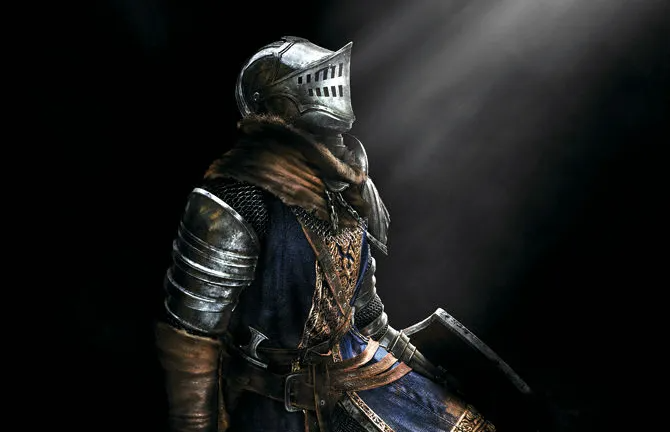
If you know me, you know I love Dark Souls. It is a constant reference point for me when evaluating all manner of games, I’ve written several blog posts about the series, and I can still talk for hours about its bosses, world, and lore.
But it wasn’t always this way! When I first played the game in 2018, I found it to be interesting, but clumsy. It was a struggle to penetrate the game’s obtuse systems, I couldn’t wrap my head around some of the more esoteric mechanics, and I found the entire second half of the game…janky, to put it gently. The difficulty wasn’t a dealbreaker, but it was a long process to learn “the dance.” To be fair to the game, I also made some questionable decisions; when creating my character, I tried to make a Stealth build which, if you are unfamiliar with how things work in Lordan, is functionally impossible.
After the credits rolled on Dark Souls, I told one of my friends that I was glad I saw it through, but probably wouldn’t ever play it again. Despite that promise, I did want to give Bloodborne a shot. I knew enough people who said, “Yeah, I don’t really like Dark Souls either, but Bloodborne is a different story.” So I gave it a shot, and loved it. Then, when quarantine rolled around, I gave Dark Souls II a chance. Then Dark Souls III. Then Sekiro.
It then came time for me to do the thing I said I’d never do: replay Dark Souls.
Armed with the knowledge of how to actually play the game, it was a breeze. I didn’t need to decipher the leveling system or learn how to reinforce a weapon. I knew how to handle the controls and, mercifully, I created a Strength build. I enjoyed my replay well enough, walking away with a greater appreciation for the game while standing by some of my original criticisms.
Fast forward to February of this year. I had no plans to play Dark Souls again, but someone else did: my fiancé. She played, I watched. It was an enjoyable experience, but she didn’t even make it to Blighttown before I too had caught the bug. I needed to replay the game again.
So I did. And I blew through it in record time. Demons slaughtered. Giants slain. Ornstein and Smough, both executed on my first attempt. Holy shit, when did I get good?
The problems with Dark Souls remain and always will. Demon’s Ruins will never not be lame, the Bed of Chaos will never not be weak, and the Tomb of the Giants will always be annoying. But, like all negative things in life, you learn how to overcome them. And when those problems are manageable, you are free to enjoy the good.
And that’s my Dark Souls story. It’s a beautiful game with a lot to offer. It’s not perfect, no game is. But the more I play it, the more I love it.
The "Game That Made Me Think" Award
This award goes to the game that has educated or informed me in some way.

Two years ago, I swore off the word “bad.” Movies, books, video games, even food…none of it is bad. There can be no Bad Art in my world ever again. I can Not Like things, sure, but I try my hardest to articulate why I don’t like those things using words other than “bad.” It has forced me to engage with works in a more critical manner and, as a result, I often feel a stronger connection to the artist.
At the end of the day, a work exists in order to evoke one feeling or another. If a negative feeling should bubble to the surface in response to a story beat or line of dialogue, our gut reaction may be to think “it’s bad” because we didn’t like it. But this flippant dismissal leaves us with a missed opportunity: the chance to understand why.
Was this plot point supposed to make us feel uncomfortable? If so, then perhaps that it was a success. It’s not a bad narrative encounter, we just weren’t prepared to be challenged that way. The stories we consume are far more deliberate than we give them credit for, so it's always worth understanding the intent behind every corny romance or telegraphed twist.
On the flip side, things may not work out exactly the way the artist intended. What was meant to be a tender, sweet moment between two characters is now an internet meme celebrating cringey chemistry. Is the actor “bad”? Or was he given direction from a man who doesn’t understand his actor’s craft or lacks interest in collaborating with others?
(I also don’t like sand).
This is all a loquacious way for me to establish one rule: I will not say that a game is bad. A game may be great. A game may be riddled with authorial conflict. I may not understand why others love a game. But no game is bad. This is my promise.
But then a game like Ninja Gaiden comes along and really puts my resolve to the test. For hours, I sat on my couch and forced myself to try to glean some insight or form some pithy summary. I struggled to understand what the game wanted from me. The reality, of course, is that the game wanted me to die.
The smarmy among us may retort: “Just like Dark Souls? But I thought you loved that!” And it’s true, I do like Dark Souls and I die quite a bit when I play it. The difference, however, is that Dark Souls wants me to learn. Every death is a lesson in some way, daring the player to get better and try again.
Ninja Gaiden wants me to die because there isn’t much game on the cartridge. It wants me to die so I don’t realize how little game there actually is. Flying enemies spawn at random, soldiers reappear if I breathe wrong, and bullets defy physics in order to strike me down. Even by 1980s standards, Ninja Gaiden is downright cruel.
The only way I had any prayer of beating the game was by playing on Nintendo Switch Online, granting me the ability to rewind the game after an untimely death. And even with the ability to, let’s say it, cheat, I still struggled. The game could murder me at any time with incredible precision and, even with all the save states and quality of life features at my disposal, it was still an unbelievable slog.
Games from the NES era were hard, not because challenges were fun, but because publishers mandated that games be unable to be completed in a rental period. Since cartridges couldn’t hold a lot of content, the longevity had to come from player resets.
Hideo Yoshizawa wanted to make the game hard, but he also wanted to tell a story; a massive departure from the game’s arcade counterpart. So it begs the question, did the game fail to actualize the director’s vision? On the one hand, no, because it’s fucking hard as fuck. On the other hand, absolutely. A story has a beginning, middle, and end, but if someone is unable to experience the end of your story because of the abundance of deathtraps arbitrarily loaded into every square pixel, then the “story” has failed.
What’s more important to the experience, the gameplay or the story? Well, none of us can answer that. That question is Yoshizawa’s to answer, and Yoshizawa’s only.
What I can say is this: the gameplay and story felt at odds with one another the entire time. The story was grand and cinematic, the world was beautiful and enticing, and characters were exactly as campy and charming as I could have hoped for. I wanted to play more, but the game was so hostile that it felt as if it didn’t want to be played. My presence was met with disdain and, as a result, soured the storytelling experience.
I know there are people who enjoy this game and, if they were to read this, could write an essay of their own about why the game’s relentless difficulty is good, actually. Furthermore, there is too much beauty in the art and story for me to completely write it off. No, I can’t say I liked this game, but I also won’t say it's bad. It just…is Ninja Gaiden, that’s all. And that’s fine.
The "Unexpected Joy" Award
This award goes to the game that defied expectations and was more fun than anticipated.

I mentioned earlier that, when asked about my preference in video games, you’ll find me saying “I’m a Nintendo fan.” There is, of course, a lot more nuance to my taste than that, but it often gets the point across; I lean towards adventure games with an action focus. Mario, Samus, and Link represent some of the best times I’ve had with video games, so, at the end of the day, a Nintendo Fan I am.
But there’s always been a blind spot there. Despite the thousands of hours I’ve poured into Nintendo’s catalog of games, I know very little about the little pink puffball named Kirby. I was first made aware of his presence in Super Smash Bros. and only ever knew him as “the little guy who gobbles up enemies and steals their abilities.” I also have vague recollections of a Kirby anime that aired Saturday mornings on WB Kids? Does that ring a bell for anyone?
When this year saw the release of a new title, Kirby and the Forgotten Land, I was reminded yet again of my lack of Kirbacious knowledge. So I endeavored to finally play a Kirby game and, because I’m me, went all the way back to the NES to try out 1993’s Kirby’s Adventure.
From the second the game starts, it moves. It’s fast-paced and full of action; enemies attack from the ground and sky, inviting you to try out their powers without wasting a moment. The frantic soundtrack is full of glee and irreverence, creating a pixelated sugar high of an adventure. In short, it rules.
Kirby’s Adventure excels at two things. Thing the first: it’s fair. Any time you pick up a game from the eight-bit era, you run the risk of hitting a wall of manufactured difficulty. Will this game, like Ninja Gaiden, throwing random pixels of junk at you with reckless abandon? Or will it dare you to better, like Dark Souls, as you try again and learn from your mistakes? You want to be challenged, not frustrated. At no point in Kirby’s Adventure was I angry at the game. I never called bullshit, I never threw the controller to the ground, or, hell, even had to research how to overcome a trial. The tools for success were at my disposal at every turn and I never felt shortchanged by the experience. For an NES game, Kirby walks that tightrope perfectly.
Kirby’s Adventure excels at two things. Thing the second: it’s bonkers. Most Nintendo adventures are presented in earnest, but the whimsy therein varies greatly. Super Mario is full of joyous magic, Metroid takes its horror very seriously, and The Legend of Zelda runs the gamut depending on the journey. But no game feels as delightfully chaotic as Kirby’s Adventure. Our hero embarks on his quest without hesitation and his foot never comes off the gas. The whole anarchic affair moves at a breakneck pace, as if the wheels could come flying off at any moment. The game appears to be held together with duct tape and yarn, ready to collapse under the weight of its own mayhem. But it never does…the madness here is expertly crafted.
“Iconic” games of the eight-bit era often earn that title simply because they were the first to introduce new conventions or styles. But Kirby’s Adventure is so much more than just “the first” of its kind. It’s novel, yes, but it's brimming with personality and charm. It’s incredible just how much Kirby is packed into his console debut.
The "Best Encounter" Award
This award goes to the best thing you came across in a game, be it a boss battle or buried treasure.

Every few years, we get a Meme Game. You know the type; they’re usually cute, often funny, and rarely ever reinvent the wheel. These are frequently indie games that manage to break through to the mainstream due to their viral appeal. How many copies do you think Untitled Goose Game would have sold were it not for the fact that it's funny to see a goose mess with a village full of people?
So when I saw there was a game about a lost cat who walks around a big city trying to get home? And said cat could knock cups off tables and scratch up furniture? Yeah, Stray is gonna be a meme game for sure. And upon release, I felt vindicated. I saw TikToks and YouTube videos of cats staring in awe at television sets as their owners simulated feline antics onscreen. This game’s appeal would start and end with the cat.
But of course I would still play the game. I love cats!
Stray is not what I wanted it to be, but was exactly what I expected it to be…right up until it wasn’t. About two hours into the experience, things take a turn. And it is here where, if you haven’t played Stray, you should stop reading. Because no matter what you think this game is, I assure you that it is not that. And if you are thinking that you probably won’t play Stray, I’m telling you that you should. Have we cleared that up? Great.
My fiancé and I were taking turns playing the game. I’d do all of the exploring, she’d do all of the talking. We were doing cute cat stuff in a city of happy robots. It was fun! Then, after we left the city, we had to venture through a dangerous stretch of abandoned tunnels. What did we find in those tunnels? Oh, I don’t know, just some wall-to-wall eldritch terrors, no biggie. Twisting tentacles and pulsating sacs, peppered with eyeballs of various sizes. Tiny blobulous insects spewed from gaps in the ceiling and chased our furry hero down corridors full of oozing flesh. It was fucking insane.
I’ve played games that slowly introduce Lovecraftian elements before. They’re great, I love them! Slowly unraveling the cosmic horror that lies beneath the surface is what makes the genre so interesting. However, most games signal to potential players that the game is, in some way, a horror game. Stray makes zero effort to that…and it's incredible.
Just imagine the whole family sitting down to play the cute little cat game they saw on the internet, only to find themselves staring down noncorporeal monsters beyond their comprehension. I would love to be a fly on the wall for that encounter!
It would be fine for Stray to be “merely” a meme game. I’ve got no problem with meme games. But for Stray to have the confidence to stray (*wink*) from the safety of its cute origins and delve into more esoteric genres? That makes this one memorable.
The "Best Music" Award
This award goes to the game with the best music. Kind of self-explanatory.
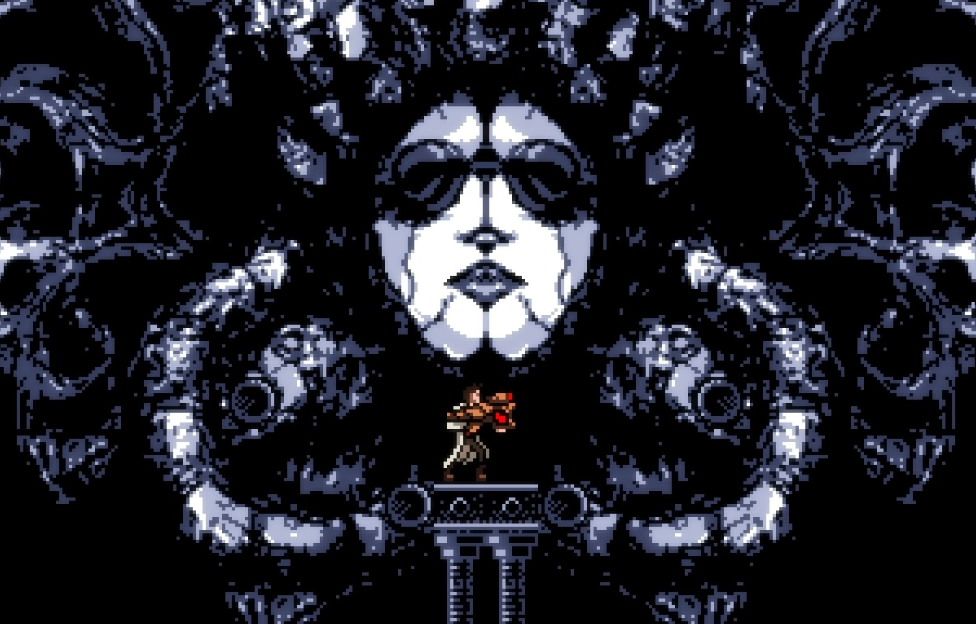
Most people, when describing their favorite music, use nice words. “Pretty.” “Catchy.” “Beautiful.” “Harmonious.” There are lots of ways to relay just why someone enjoys certain songs or scores.
On the other hand, you have me, a certified stupid person. I like to use words like “grating,” “jagged,” or “crunchy,” and that’s because I really like music that is ugly. I like songs that are aggressive, harsh, and willing to make something cool out of otherwise weird sounds.
And that describes the music of Axiom Verge to a T. A metroidvania from 2015, this game is a perfect blend of old and new. It’s full of retro art rendered with modern capabilities, classic platforming sensibilities with novel upgrades, and fresh twists on established conventions. The music takes its cues assiduously, delivering a soundtrack that perfectly captures its SNES-era influence without ever sounding stale.
The title screen wastes no time in relaying to the player the type of adventure upon which they are about to embark. It’s spooky! It’s otherworldly! It’s gonna be full of weird sci-fi bullshit! As we cross the breach, we are treated to some of the coolest, fast-paced, and, as promised, downright ugly chiptune music I’ve ever heard.
Sometimes my fiancé will come home and see me sitting on the couch, fully relaxed, while music like this is blasting out of the speakers. It may not be most people’s idea of a quiet night in, but it is for me. I love this type of stuff. A soundtrack like this can really elevate a game and I’m excited to try out the sequel, if for no other reason than to hear a brand new batch of kickass songs.
The "Best Multiplayer Game" Award
This award goes to the best game for multiple players.
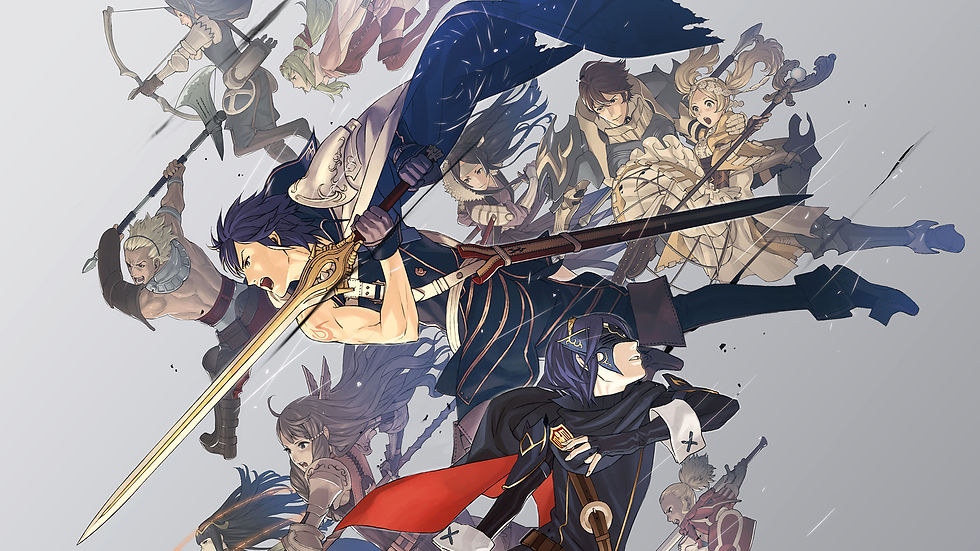
When I put a game on my backlog list, I genuinely intend to play it. It’s not a list I maintain for my health; one day I will play every video game ever. Somehow. So while you may find it funny that Fire Emblem: Three Houses remains on my backlog list year after year, just know that one day I will get to it.
The main reason I haven’t started it, however, is because Fire Emblem is a whole thing. There are a shit zillion titles in the series and I have no idea which games are good entry points into the franchise or which ones are even worth playing. Fire Emblem was always a little daunting for me because I didn’t know who to ask about recurring elements or bizarre quirks that may surprise me during a playthrough.
But sometimes the stars will align and you’ll find the guidance you need. After some heavy consultation and a bit of ebay scouring, the time came for me to boot up my first game in the series. I was finally playing Fire Emblem: Awakening.
I haven’t played a single-player game this communally in…ever? I was consulting my pals over Discord, I was sending screenshots over messenger, I even sat on a pier in Coney Island with friends while seeking advice on how best to execute my battle plan.
Fire Emblem: Awakening walks an incredibly fine line. The narrative, and missions therein, are fairly linear. There are a few points in which choice and consequence play into effect, but it’s a fairly rigid story all things considered. Despite this, the game offers a wide array of options for customizing the experience within those parameters. Literally any character can get married, change classes, permanently die…so much can happen on this journey.
And discussing those possibilities made the experience all the more intriguing. From debating the nuances of how to make an appropriately diverse roster to sharing memes over which characters would post the best thirst traps, I spoke with my friends more about Fire Emblem: Awakening than I did with any actual multiplayer game I played this year.
I look forward to venturing onward in the Fire Emblem series. And I can’t imagine doing it without all of my friends.
The "Wildcard" Award
This award goes to a game that deserves a shout out, even though it may not be the best at anything.

I am in favor of rip-offs. I think that artists should absolutely be able to look at a movie or book or game and say, “Me too!” Sure, these rip-offs may not always replicate the spirit of the original, but every now and then, someone captures lightning in a bottle and a transcendent piece of artwork is born.
The gaming landscape is full of rip-offs. A lot of them are forgettable, but sometimes you play something that feels so natural and intuitive that you can’t help but love it. That game, my friends, is Bug Fables: The Everlasting Sapling.
If you’ve somehow stumbled upon this blog with no knowledge of who I am, let me be the first to tell you that I fucking LOVE Paper Mario. It’s a Top Three game for me without a doubt and I’ve probably sunk over a hundred hours playing it over and over. I think it’s damn near perfect, especially for its time, and I recommend every person on the planet, whether they’re a seasoned veteran or gaming newcomer, to check it out. It is pure, interactive bliss.
And Bug Fables said, “Me too!”
It doesn’t miss a single beat. Every mechanic, every enemy, every narrative cue…flawlessly executed. Hell, there are even features in Bug Fables that, in hindsight, I wish Paper Mario had thought to include! You can forfeit one party member’s turn for another to go again? PERFECT!
The entire adventure, of course, is presented with the classic shoebox diorama art style that Paper Mario introduced (and subsequently abandoned) over twenty years ago. All the while, a masterful midi-meets-modern soundtrack offers up banger after banger.
What’s most impressive is how many punches Bug Fables doesn’t pull. Yes, this is a cutesy story about some happy little bugs rescuing a mythical sapling! Adorable! But what if the story ended with our heroes destroying organized religion and killing God? Very cool.
It is easy to dismiss rip-offs. They lack originality! They won’t be as good! Just make something new! But the line between “rip-off” and “inspired by” is razor thin and, in some cases, a needless distinction. Creativity can strike at any moment, from any source, and you never know what incredible journey might be found underneath the surface.
The Game of the Year
The big boy.

On August 4th, I officially left my company. It was almost eight years to the day I’d been there and, though it had its ups and downs, I loved the job and the people I worked with. It hurt me to leave, but a new opportunity had come my way and it would have been foolish of me to turn it down. But I wasn’t prepared for how hard it would be to say goodbye.
I spent a few days crying, on and off. I was really trying to grapple with what I valued, what my friends and family expected of me, and if I was really making the right decision all things considered. Mostly, though, I was just struggling with the knowledge a fundamental, foundational chapter of my life had ended…and I was the one who chose to end it.
A close friend reminded me that I had to grieve. I had to let that process happen. And so I sought out the one game on my shelf I had been, unwittingly, saving for a time like this. I finally played Spiritfarer.
If you’ve ever tried to thread a needle, you know how tedious the process can be. The eye of the needle is seemingly microscopic compared to your big, dumb fingers. You can barely see what’s going on because everything is just so precise. It can take quite a bit of time to correctly thread just one needle.
Spiritfarer, by contrast, takes a whole handful of thread, throws it down a hallway, and watches with glee as the wad somehow manages to untangle itself and then thread seventeen different needles, one after another, scattered all over the room. It’s seemingly impossible, and yet…you witnessed it. It happened.
Where do we even start? Perhaps with the nuts and bolts. Spiritfarer is a management sim wherein you operate a boat that ferries around a bunch of spirits. These spirits are people who have recently passed away, but have unfinished business in the mortal realm. You build them houses and bake them food and keep them entertained, all while helping them wrestle with their inner demons.
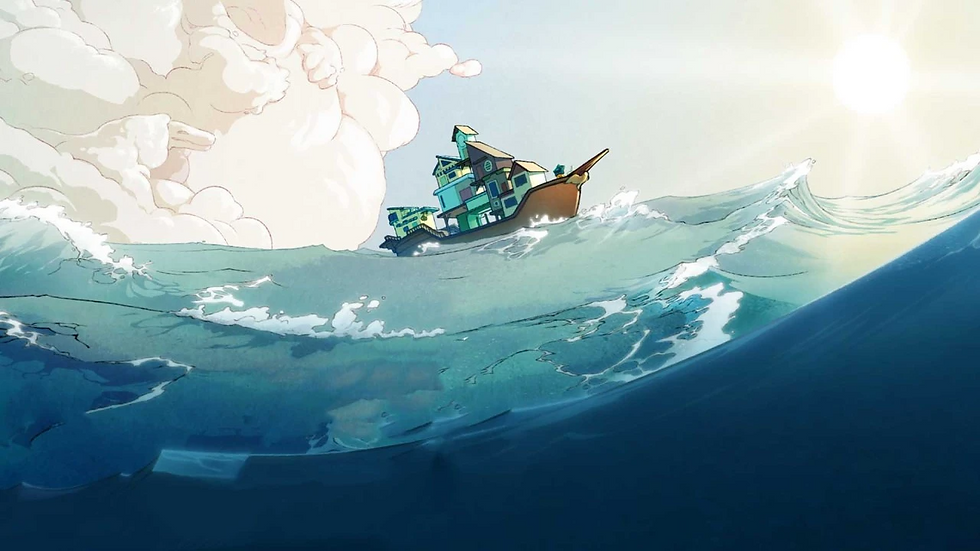
Management sims can be…aimless at times. To some, that’s a key feature of the genre. However, Spiritfarer lives and dies by its characters, so a freeform gameplay structure could conflict with its laser-focused narrative if not done well. Somehow, against all odds, the game pulls it off. There is an invisible lodestar guiding your journey, always ensuring you are exactly where you need to be. You can be doing whatever you want, and your story is always the correct amount of Told. It’s mind-boggling.
The game is also an incredible aesthetic triumph. Expressive animation and gorgeous environments abound, and a beautiful score accompanies your journey at every turn. At times you’re inspired, at times you’re mystified, at times you’re frightened. But at no point do you ever feel alone. You are always surrounded by your friends…right up until you’re not.
This is a game about dying, after all. You’ll grow attached to the folks on your boat, but their time will come eventually. But, in a strange way, it’s a sign of a job well done. You’ve brought peace to these characters and their passing is, if anything, something to be celebrated.
It’s hard to do though.
Spiritfarer regularly finds new and exotic ways to completely rip your heart out of your chest. Every time you think you’re prepared to escort someone to the Everdoor, the game introduces one final wrinkle that leaves you laying on the floor in a puddle of your own tears.
Despite this, though, Spiritfarer avoids becoming too saccharine. It is an absolute masterclass in tone. After all, it would be so very easy for a game like this to be laden with sadness. It somehow avoids becoming a heavy-handed experience full of sorrow and misery. At its core, Spiritfarer is a joyous celebration of life. In the face of unending heartbreak, love prevails.
Saying good-bye is hard. Choosing to say good-bye is even harder. Knowing that a wonderful relationship is coming to an end can fill you with a sense of dread, but Spiritfarer reminds us of the permanence of the bonds we make. Love is an intangible thing, but it is as real as the air we breathe or the food we eat. And as I write this, I am reminded of the parting words of a friend I made aboard the ship.
“Everything is but a meaningless arrangement of atoms. Everything you've ever known, seen, or experienced. Fortuitous circumstances. In the universal chaos, humanity emerged. Not a tiny bit more purposeful than the rest. But with an incredible faculty: that of creating meaning."



コメント